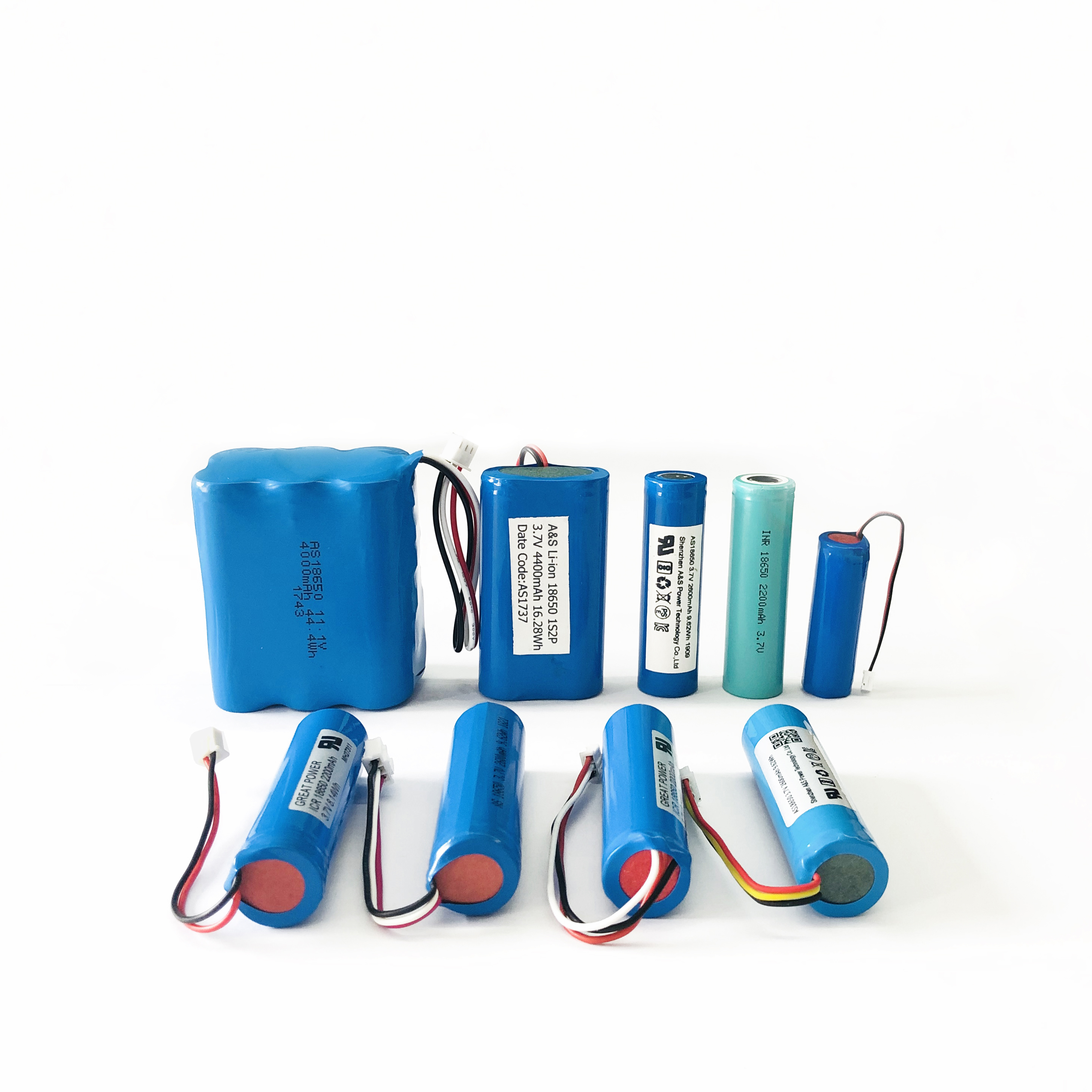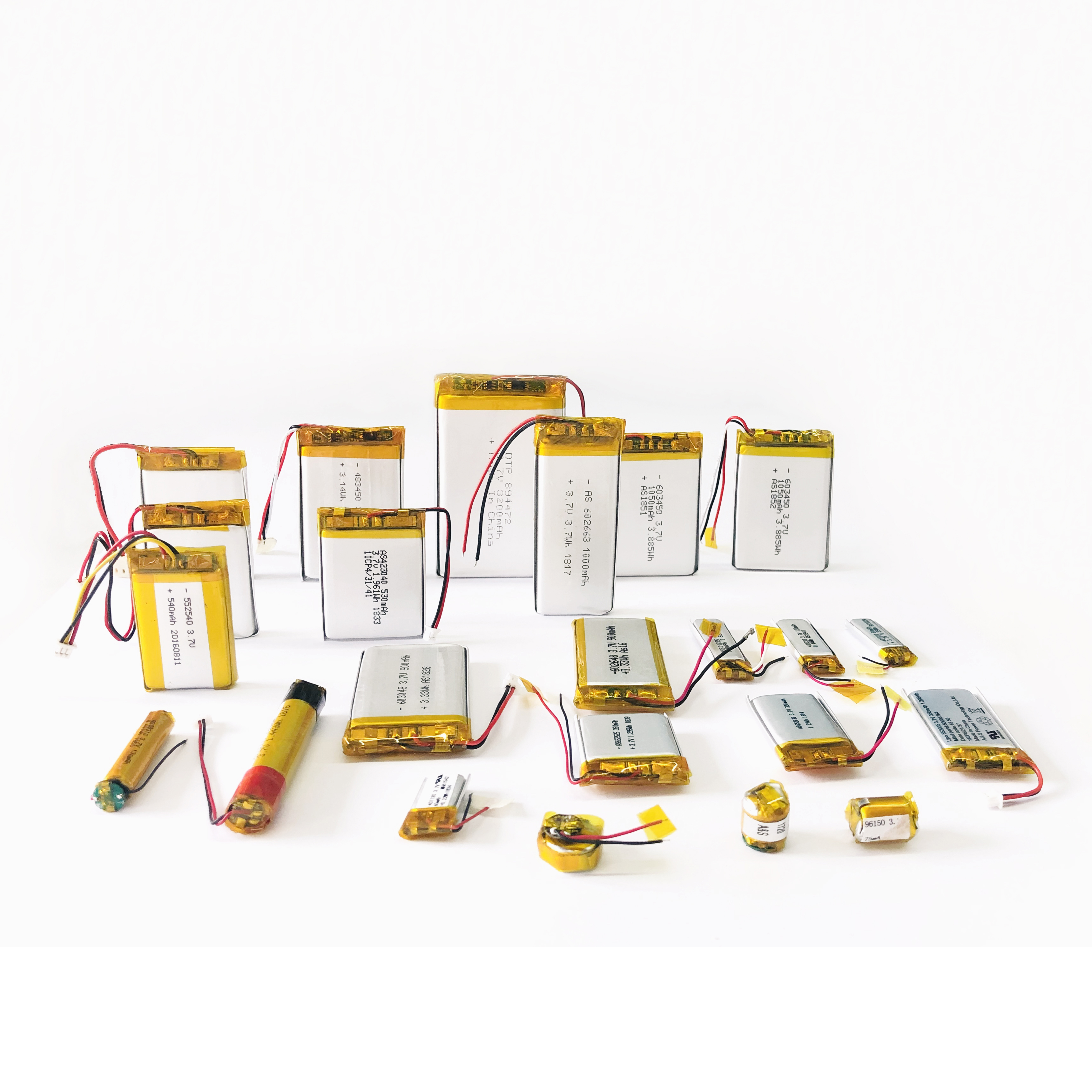Battery
Application
Hot product
Contact us
The difference between lithium polymer batteries and lithium batteries
2021-07-02
Lithium Polymer batteries generally refer to lithium ion polymer batteries. According to the different electrolyte materials used in lithium ion batteries, lithium ion batteries are divided into liquid lithium ion batteries, polymer lithium ion batteries or plastic lithium ion batteries. Do you know what the difference is between a lithium polymer battery and a lithium battery? Let's take a look.


First, the difference between lithium polymer battery and lithium ion battery
Compared with lithium ion battery, the characteristics of lithium polymer battery are as follows:
1. Thin battery: such 3.7V400mah capacity, its thickness can be as thin as 0.5mm.
2. Batteries can be designed in many shapes.
3. The battery can be bent and deformed: the maximum bending capacity of polymer battery is about 900.
4. Can be made into a single high voltage: liquid electrolyte batteries can only be made by several batteries in series to obtain high voltage, polymer batteries.
5.It will have twice the capacity of a lithium-ion battery of the same size.
Second, lithium polymer battery life
Correct statement: lithium battery life is related to the number of charging cycle completed, and the number of charging has no direct relationship.
To put it simply, for example, a lithium-ion battery USES only half of its power on the first day, and then recharges it. If you do it the next day, you charge half of it and get two charges, which counts as one charge cycle, not two. As a result, it can often take several charges to complete a cycle. After each charging cycle, the amount of power decreases a little. However, the reduction is very small. High-quality batteries retain 80% of their original power after multiple cycles, which is why many lithium-ion products are still in use after two or three years. Of course, lithium battery life to the end or need to replace.
The life of a lithium battery is generally 300 ~ 500 charging cycles. Assuming that the electric quantity provided by a complete discharge is Q, if the reduction of electric quantity after each charging cycle is not taken into account, the lithium electric quantity can provide or supplement 300Q-500q electric quantity in its lifetime. So we know that if you charge it every time you use 1/2, you can charge it 600 to 1,000 times; If you charge it one third of the time, you can charge it 900 to 1500 times. Similarly, if the charge is random, then the number of times. In short, no matter how you charge it, the total amount of electricity added is constant at 300Q to 500Q.So, we can also understand this: lithium battery life is related to the total amount of battery charge, and has nothing to do with the number of charges. The effect of deep discharge and shallow discharge on lithium battery life is not different.
In fact, shallow discharge and shallow charge are more beneficial to lithium battery. Deep discharge and deep charge are necessary only when the power module of the product is calibrated for lithium battery. Therefore, products powered by lithium need not be stuck in the process. Everything should be convenient and charged at any time without worrying about affecting the life.
If the lithium battery is used in an environment above the specified operating temperature, i.e. 35°C or above, the battery power will be continuously reduced, i.e. the battery will not last as long as usual. If you have to charge the device at these temperatures, the damage to the battery will be even greater. Even if the battery is stored in a hot environment, it will inevitably cause corresponding damage to the battery quality. Therefore, it is a good way to extend the life of lithium battery by keeping the operating temperature as good as possible.
If lithium-ion battery is used at low temperatures, below 4°C, you will also find that the battery life is reduced. The original lithium-ion battery of some mobile phones is not even charged at low temperatures. But don't worry too much, this is only a temporary condition. Unlike in a hot environment, once the temperature rises, the molecules in the battery are heated and immediately return to their previous charge.
To get the most out of a lithium-ion battery, it needs to be used regularly to keep the electrons in the battery flowing at all times. If lithium battery is not used frequently, please remember to complete a charging cycle for lithium battery every month, and do a power calibration, namely deep discharge and deep charge.


First, the difference between lithium polymer battery and lithium ion battery
Compared with lithium ion battery, the characteristics of lithium polymer battery are as follows:
1. Thin battery: such 3.7V400mah capacity, its thickness can be as thin as 0.5mm.
2. Batteries can be designed in many shapes.
3. The battery can be bent and deformed: the maximum bending capacity of polymer battery is about 900.
4. Can be made into a single high voltage: liquid electrolyte batteries can only be made by several batteries in series to obtain high voltage, polymer batteries.
5.It will have twice the capacity of a lithium-ion battery of the same size.
Second, lithium polymer battery life
Correct statement: lithium battery life is related to the number of charging cycle completed, and the number of charging has no direct relationship.
To put it simply, for example, a lithium-ion battery USES only half of its power on the first day, and then recharges it. If you do it the next day, you charge half of it and get two charges, which counts as one charge cycle, not two. As a result, it can often take several charges to complete a cycle. After each charging cycle, the amount of power decreases a little. However, the reduction is very small. High-quality batteries retain 80% of their original power after multiple cycles, which is why many lithium-ion products are still in use after two or three years. Of course, lithium battery life to the end or need to replace.
The life of a lithium battery is generally 300 ~ 500 charging cycles. Assuming that the electric quantity provided by a complete discharge is Q, if the reduction of electric quantity after each charging cycle is not taken into account, the lithium electric quantity can provide or supplement 300Q-500q electric quantity in its lifetime. So we know that if you charge it every time you use 1/2, you can charge it 600 to 1,000 times; If you charge it one third of the time, you can charge it 900 to 1500 times. Similarly, if the charge is random, then the number of times. In short, no matter how you charge it, the total amount of electricity added is constant at 300Q to 500Q.So, we can also understand this: lithium battery life is related to the total amount of battery charge, and has nothing to do with the number of charges. The effect of deep discharge and shallow discharge on lithium battery life is not different.
In fact, shallow discharge and shallow charge are more beneficial to lithium battery. Deep discharge and deep charge are necessary only when the power module of the product is calibrated for lithium battery. Therefore, products powered by lithium need not be stuck in the process. Everything should be convenient and charged at any time without worrying about affecting the life.
If the lithium battery is used in an environment above the specified operating temperature, i.e. 35°C or above, the battery power will be continuously reduced, i.e. the battery will not last as long as usual. If you have to charge the device at these temperatures, the damage to the battery will be even greater. Even if the battery is stored in a hot environment, it will inevitably cause corresponding damage to the battery quality. Therefore, it is a good way to extend the life of lithium battery by keeping the operating temperature as good as possible.
If lithium-ion battery is used at low temperatures, below 4°C, you will also find that the battery life is reduced. The original lithium-ion battery of some mobile phones is not even charged at low temperatures. But don't worry too much, this is only a temporary condition. Unlike in a hot environment, once the temperature rises, the molecules in the battery are heated and immediately return to their previous charge.
To get the most out of a lithium-ion battery, it needs to be used regularly to keep the electrons in the battery flowing at all times. If lithium battery is not used frequently, please remember to complete a charging cycle for lithium battery every month, and do a power calibration, namely deep discharge and deep charge.











